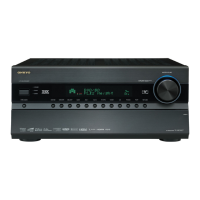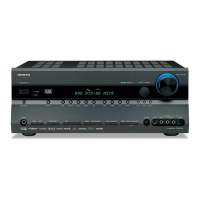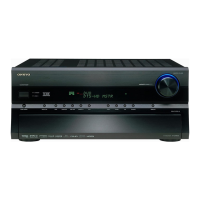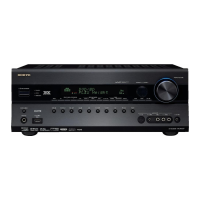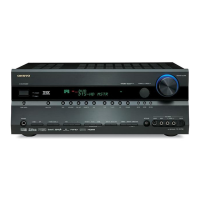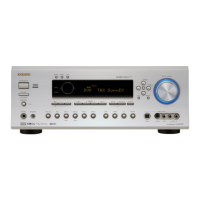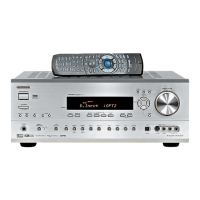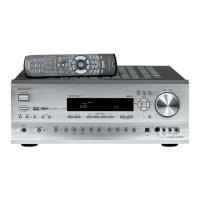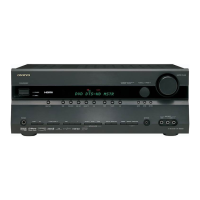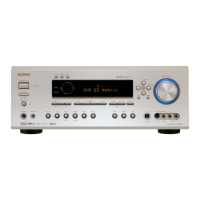43
Connecting the AV Receiver/AV Amplifier—Continued
With (Remote Interactive), you can use the follow-
ing special functions:
■ Auto Power On/Standby
When you start playback on a component connected
via , if the AV receiver/AV amplifier is on
Standby, it will automatically turn on and select that
component as the input source. Similarly, when the
AV receiver/AV amplifier is set to Standby, all com-
ponents connected via will also go on Standby.
■ Direct Change
When playback is started on a component connected
via , the AV receiver/AV amplifier automatically
selects that component as the input source. If your
DVD player is connected to the AV receiver/AV
amplifier’s multichannel DVD input, you’ll need to
press the [MULTI CH] button to hear all channels
(see page 60), as the Direct Change function
only selects the DVD FRONT L/R jacks.
■ Remote Control
You can use the AV receiver/AV amplifier’s remote
controller to control your other -capable Onkyo
components, pointing the remote controller at the
AV receiver/AV amplifier’s remote control sensor
instead of the component. You must enter the appro-
priate remote control code first (see page 105).
Notes:
• Use only cables for connections. cables
are supplied with Onkyo players (DVD, CD, etc.).
• Some components have two jacks. You can con-
nect either one to the AV receiver/AV amplifier. The
other jack is for connecting additional -capable
components.
• Connect only Onkyo components to jacks. Con-
necting other manufacturer’s components may cause a
malfunction.
• Some components may not support all functions.
Refer to the manuals supplied with your other Onkyo
components.
• While Zone 2 is on, the Auto Power On/Standby and
Direct Change functions do not work.
This port is for connecting the AV receiver/AV amplifier
to home automation equipment and external controllers.
Notes:
• Before connecting the power cord, connect all of
your speakers and AV components.
• Turning on the AV receiver/AV amplifier may cause a
momentary power surge that might interfere with
other electrical equipment on the same circuit. If this
is a problem, plug the AV receiver/AV amplifier into a
different branch circuit.
• Do not use a power cord other than the one supplied
with the AV receiver/AV amplifier. The supplied
power cord is designed exclusively for use with the
AV receiver/AV amplifier and should not be used with
any other equipment.
• Never disconnect the power cord from the AV
receiver/AV amplifier while the other end is still
plugged into a wall outlet. Doing so may cause an
electric shock. Always disconnect the power cord
from the wall outlet first, and then the AV receiver/AV
amplifier.
Connecting Onkyo Components
Step 1: Make sure that each Onkyo component is
connected to the AV receiver/AV amplifier
with an analog audio cable (connection
in the hookup examples) (see pages 29 to
40).
Step 2: Make the connection.
Step 3: If you’re using an MD, CDR, or RI Dock,
change the input display (see page 50).
a
Connecting the RS232 Port
Connecting the Power Cord
LR
FRONT
DVD
L
R
IN
CD
L
R
REMOTE
CONTROL
ANALOG
AUDIO OUT
LR
ANALOG
AUDIO OUT
e.g., CD player
e.g., DVD player
Step 1 (not North American model):
Connect the supplied power cord to the AV
receiver/AV amplifier’s AC INLET.
Step 2: Plug the power cord into an AC wall outlet.
(The Standby indicator lights up.)
To AC wall outlet
TX-SR705_En.book Page 43 Monday, May 28, 2007 2:13 PM
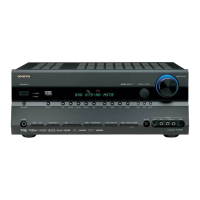
